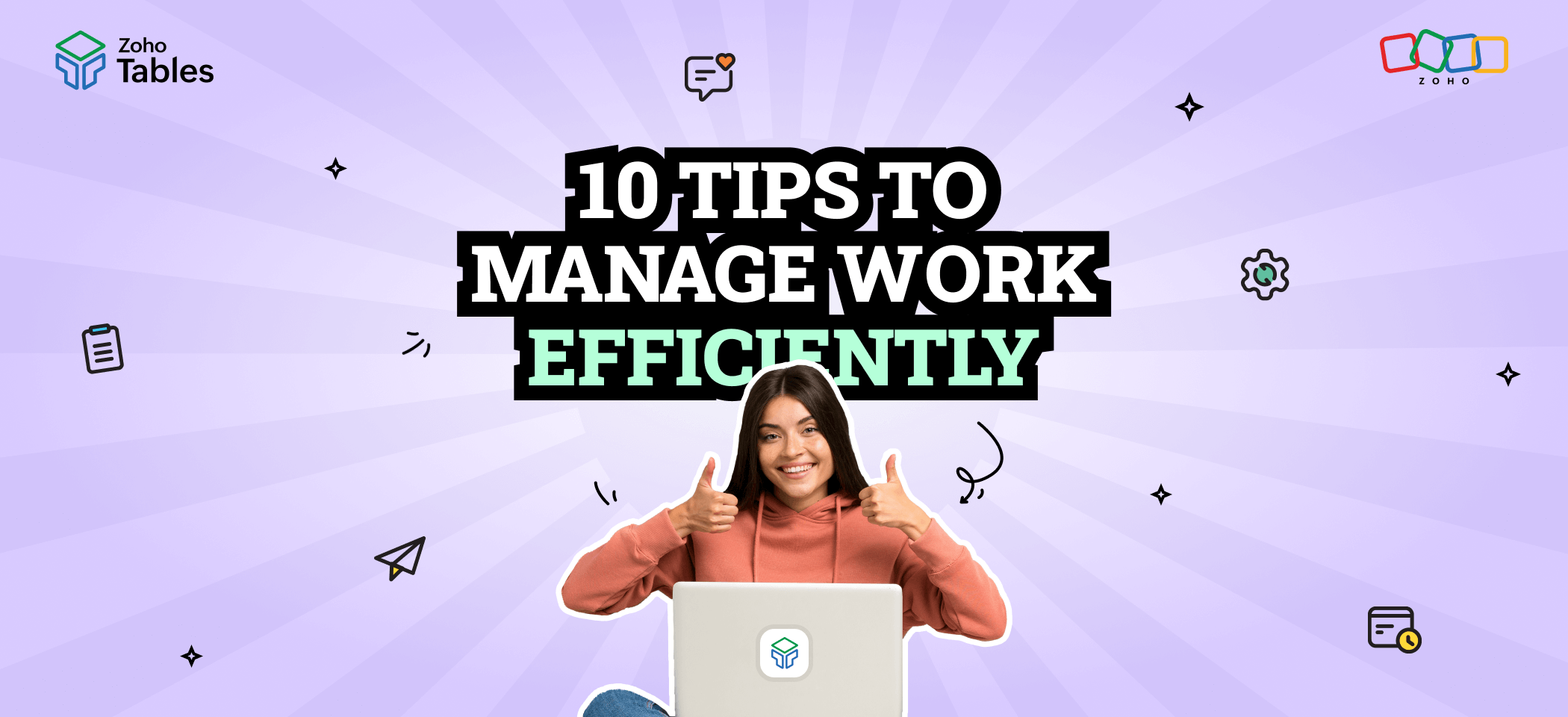- HOME
- Work Management
- The best Excel alternative for managing customer data
The best Excel alternative for managing customer data
- Last Updated : January 3, 2025
- 176 Views
- 4 Min Read

As a small or mid-sized business owner, it’s important to have an efficient and affordable system for managing customer data. While high-end CRM software can be expensive and might be overkill for your needs, using an Excel sheet may seem viable due to its flexibility, low cost, and the availability of templates and tutorials.
However, Excel's drawbacks can limit its effectiveness in managing your customer data. In this post, we’ll take a closer look at the benefits and limitations of Excel and explain why Zoho Tables offers a more powerful solution for handling customer information.
Benefits of using Excel for customer management
Ease of use
Excel's user-friendly grid layout and many learning resources, from books to online courses, make it accessible to users of all skill levels. You can also find templates specifically designed for customer management, saving you time without building trackers from scratch.
Versatile functions
Excel is known for its extensive list of functions, which can assist in customer data management. Formulas like VLOOKUP can help you retrieve customer details, COUNTIF can track repeat customers, and conditional formatting can highlight specific data points, such as inactive customers.
Cost-effective
Excel is available as part of Microsoft's Office suite, with options for a one-time purchase or free web access. This makes it an appealing tool for businesses operating on a tight budget.
Drawbacks of using Excel for customer management
Limited data views
Excel’s grid view restricts how you can interact with your data. While basic charts and graphs are available, advanced views, such as kanban boards, calendars, or gallery displays for customer profiles, are missing. For instance, Excel falls short if you want a visual way to track leads across sales stages or view customer feedback summaries.
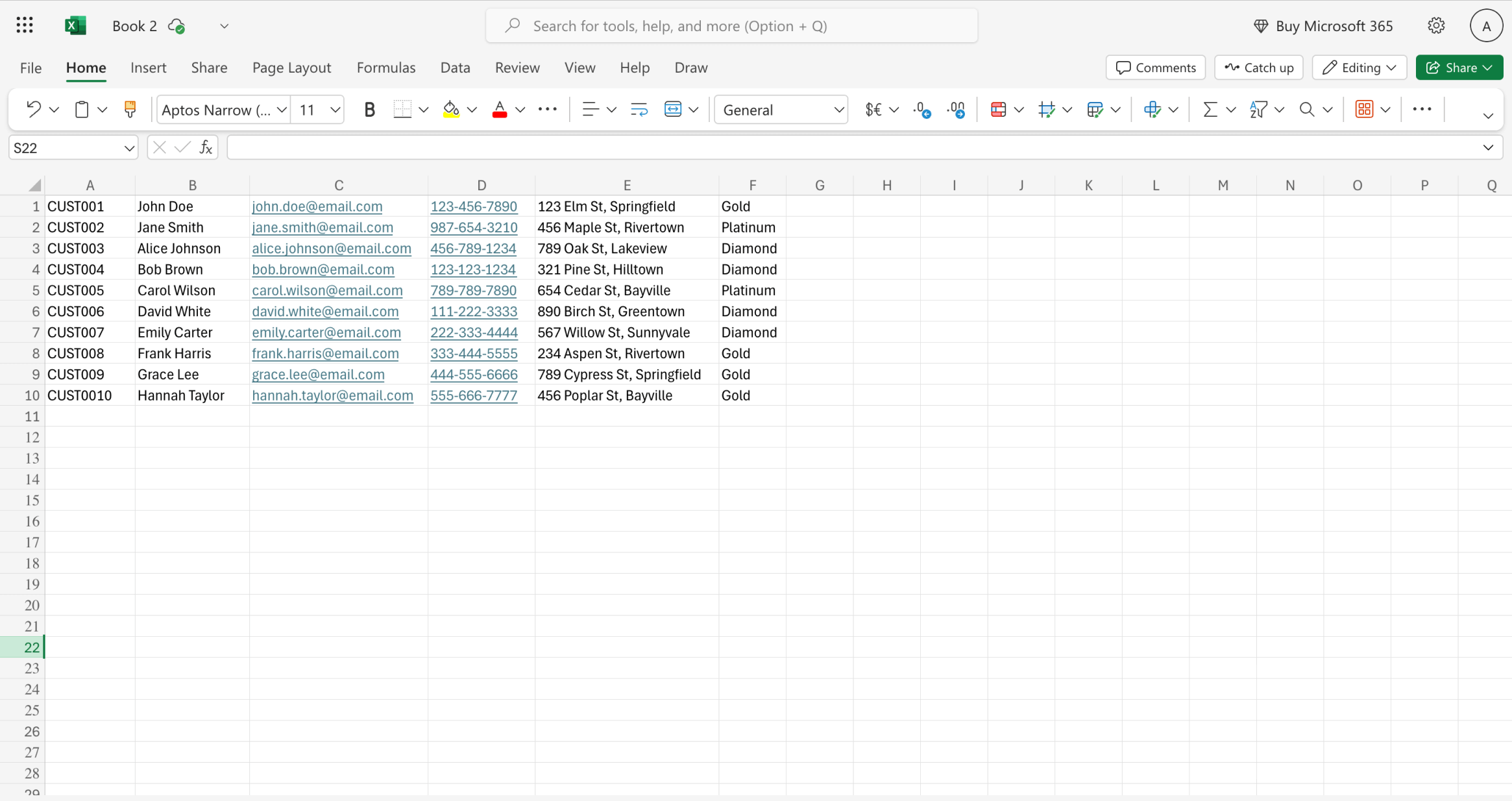
Lack of automation
When managing customer data, tasks like sending follow-up reminders or notifying your team about inactive customers require timely alerts. Excel doesn’t provide built-in automation for workflows like these, leading to inefficiencies and the risk of human error.
Collaboration challenges
Customer management often involves working together with multiple departments—sales, support, and marketing. While Excel’s web version allows some level of collaboration, it lacks robust tools for real-time updates and can lead to version control problems, especially when multiple users work on the same sheet.
Time-consuming manual processes
As your customer database grows, updating records manually becomes labor-intensive and error-prone. Adding and maintaining customer contact details, purchase histories, or support tickets can quickly become overwhelming.
No dynamic relationships between data
Customer management often requires linking multiple datasets, such as contact details, sales records, and support histories. Excel doesn’t support bidirectional relationships between sheets, so if a customer’s information changes, you must manually update every related tab, increasing the risk of discrepancies.
Why Zoho Tables is better for managing customer data
Zoho Tables offers an intuitive and powerful alternative to Excel by combining the simplicity of spreadsheets with the advanced capabilities of databases.
User-friendly interface
Zoho Tables provides a grid interface that is familiar to spreadsheet users but has enhanced customization options. Features like adjustable grid sizes, colorful icons, and prebuilt data fields make it visually appealing and easy to navigate. Additionally, the option to display only active rows eliminates the clutter of unused cells.
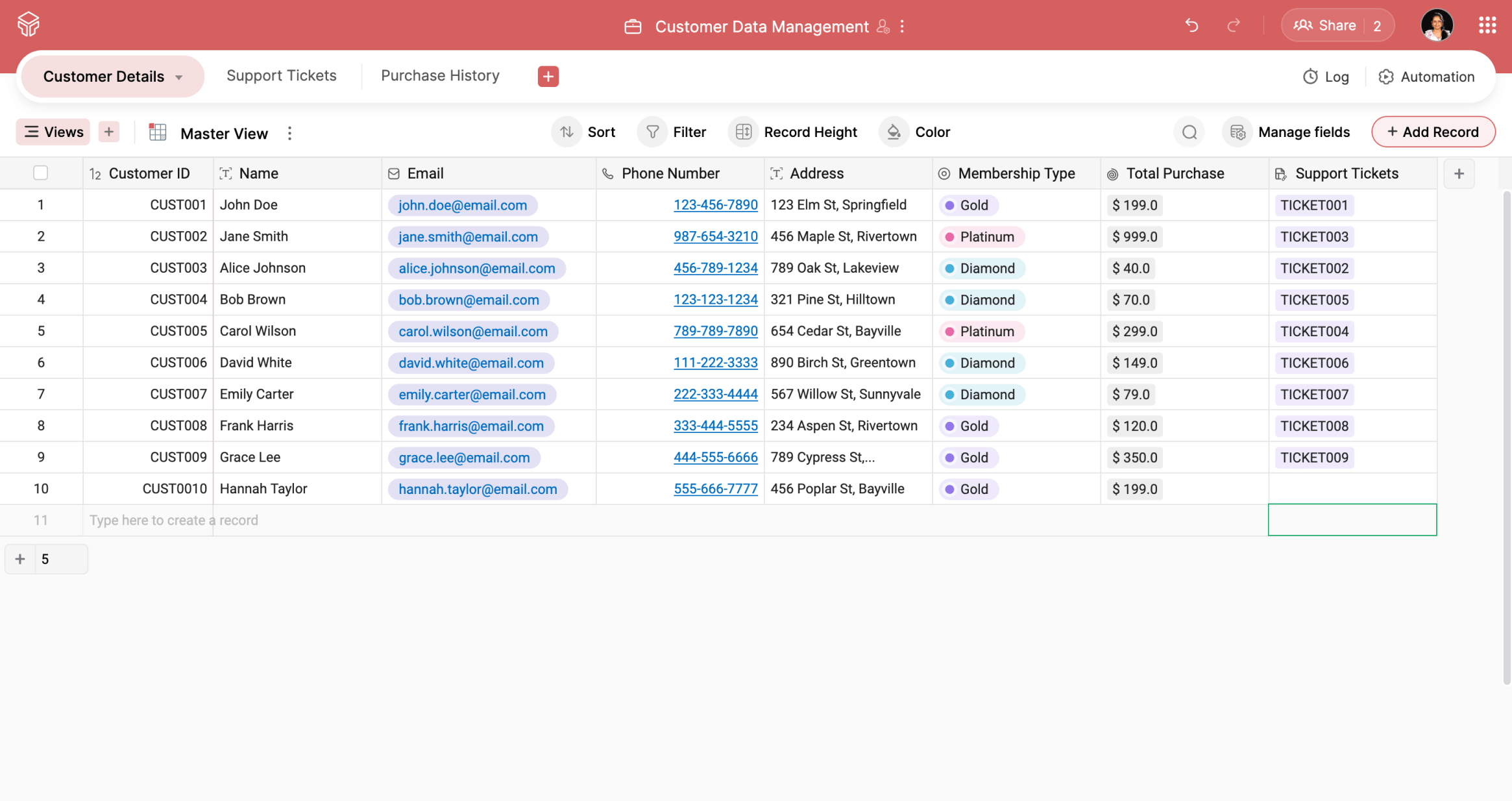
Seamless relationships between tables
Unlike Excel, Zoho Tables allows you to create and manage bidirectional relationships between tables. For instance, if you update a customer’s email in your Customer Details table, the change will reflect automatically in the Support Tickets and Purchase History tables linked to it. This ensures data consistency without manual effort.
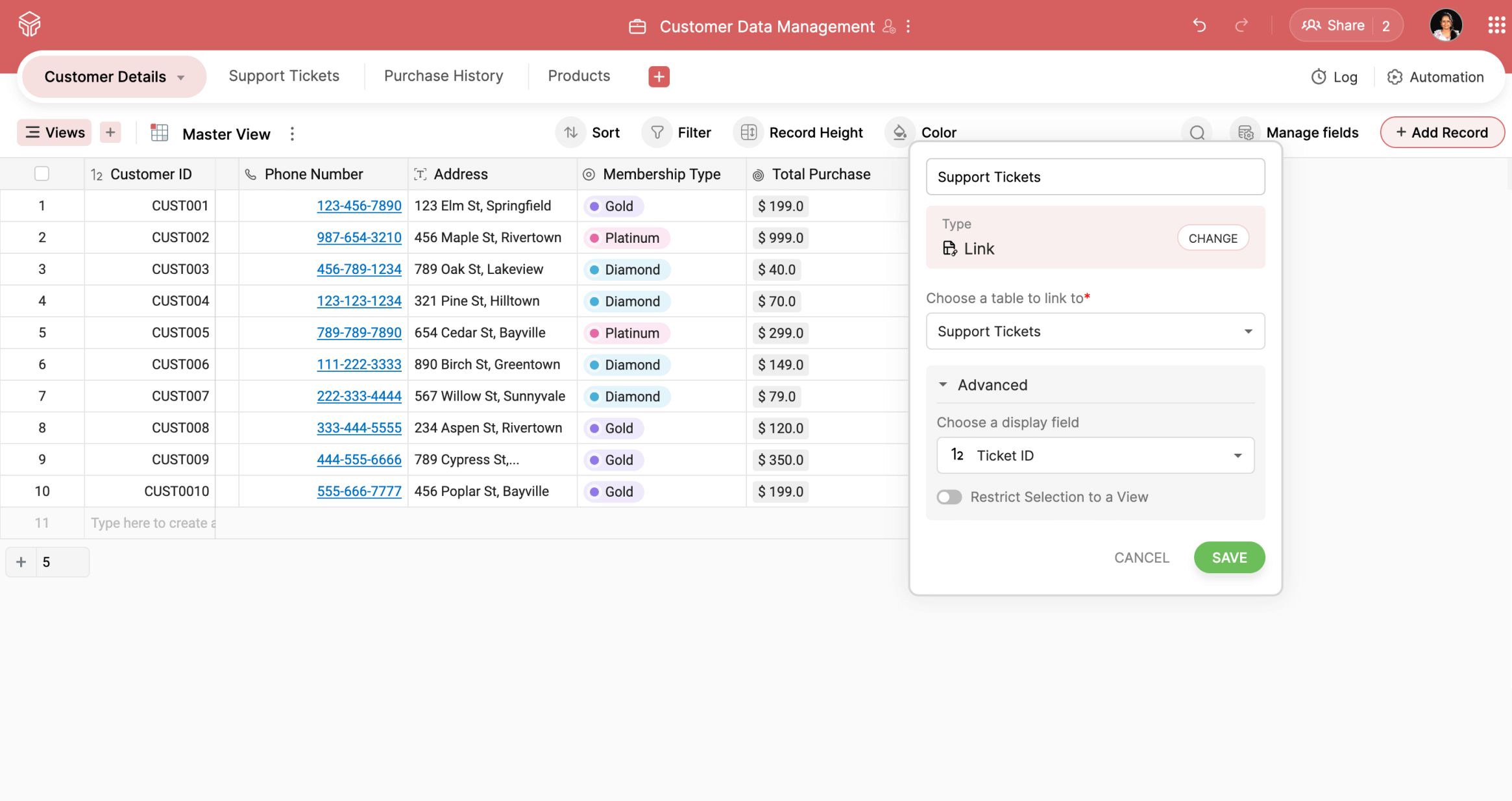
Efficient automation
Automation in Zoho Tables helps you streamline repetitive tasks. You can set up workflows to do things like send reminders, update records, or trigger notifications. For example, an automated email can be sent to follow up with customers who've recently made purchases to get their feedback.
Versatile views
Zoho Tables offers multiple views for better data interaction:
- Kanban view: Track support tickets by dragging and dropping cards between ticket statuses.
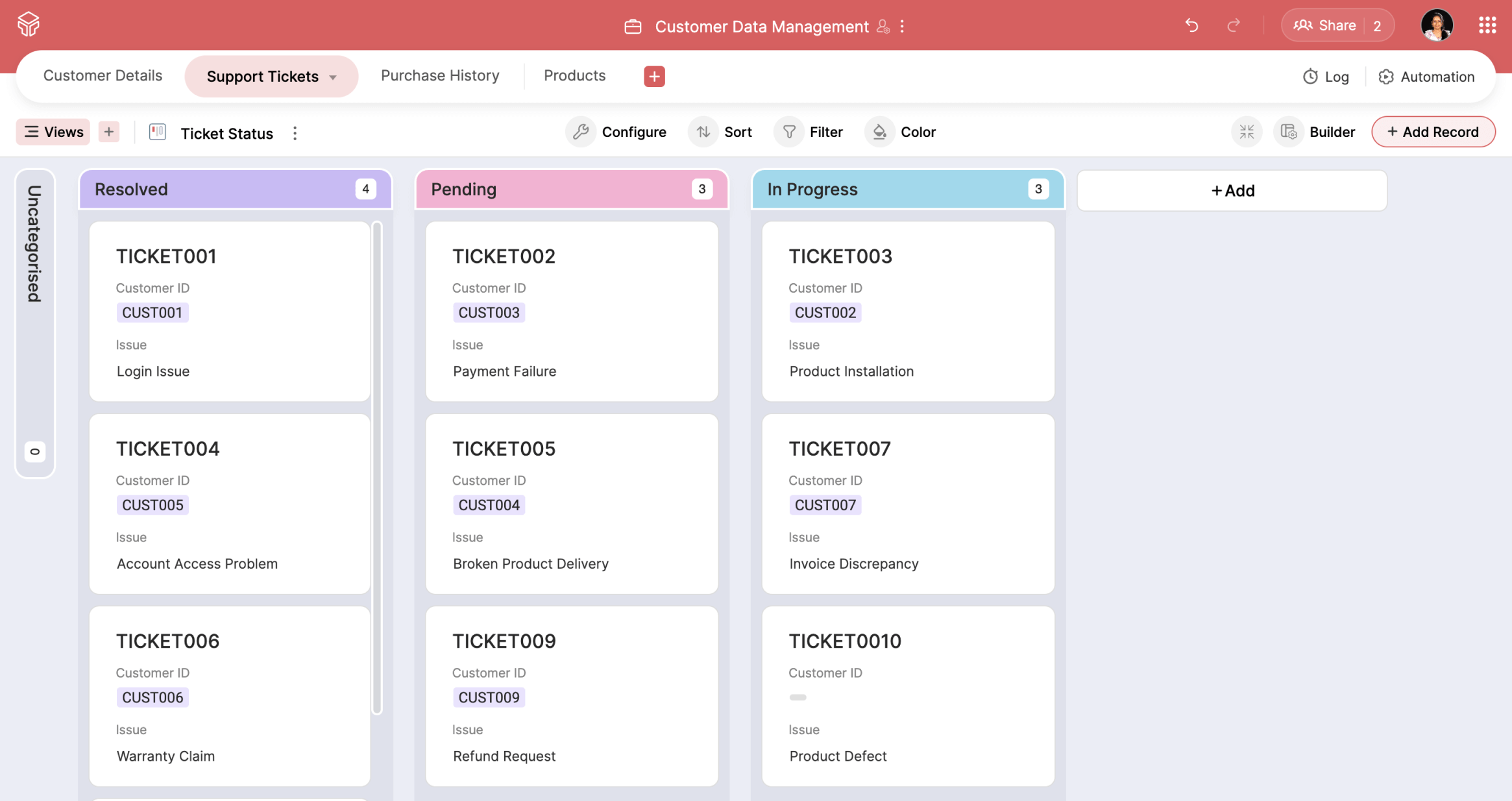
- Calendar view: Visualize delivery dates in a calendar to track delivery schedules, monitor order fulfilment patterns, and plan promotions and offers during peak delivery periods.

- Gallery view: Create visual displays of products, bills, or customer profiles.

Real-time collaboration and controlled access
Zoho Tables ensures secure collaboration with role-based access controls. You can assign permissions, such as manager, editor, or viewer, to specific users and restrict access to sensitive customer data.
Additionally, Form view allows you to collect customer information directly. Responses submitted via a form automatically populate your tables, eliminating the need for manual data entry and reducing errors. This also eliminates the need to share your table with members outside of your team to collect data.

Try Zoho Tables today!
Zoho Tables is designed to overcome Excel’s limitations, offering a modern solution for customer data management. Whether it’s building relationships between datasets, automating workflows, or visualizing data, Zoho Tables simplifies the process, making it ideal for businesses looking to scale efficiently.
It's also easy to get started with Zoho Tables—you can import data from existing spreadsheets from local storage, URLs, or cloud services.
Start my free trial of Zoho Tables.
 Archanaa
ArchanaaA fantasy writer who found a home in product marketing.
